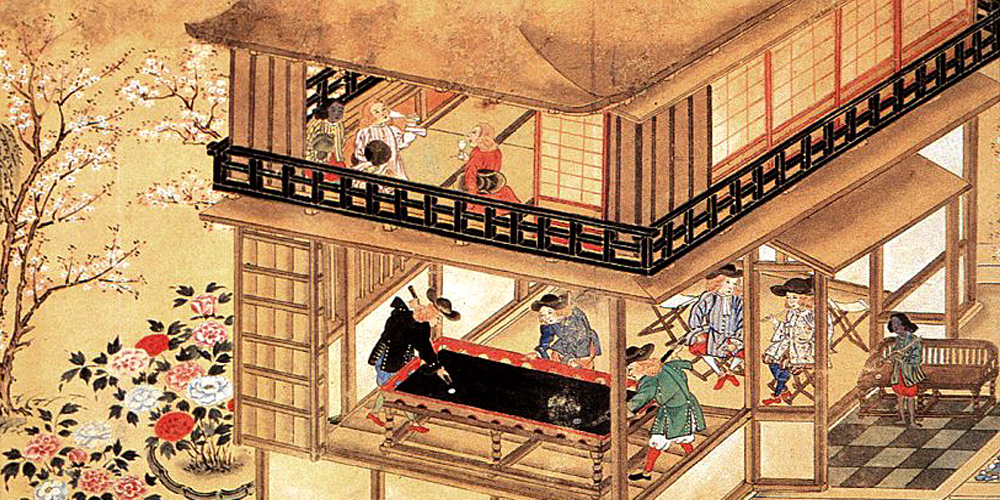EastAsiaVision is a digitization project of a large collection of visual and material sources on the Dutch in Japan and Netherlands-Japan relations. This Leiden University project, which ran from 1996 until 2000, was funded by additional grants of NIOD (Nederlands Instituut voor Oorlogsdocumentatie, formerly RIOD), under the supervision of the late Professor Erik Zürcher.
Together with Professor Willem van Gulik and his project team, Professor Erik Zürcher worked on collecting visual materials on the history of Dutch-Japanese relations and cultural interactions. These materials were for example woodblock prints on Dutch life in Nagasaki on the island of Deshima, or paintings of the so-called 'Hofreis', the Dutch compulsory yearly trip to the shogun in Edo.
The main categories of the EastAsiaVision collection are as follows:
- The Namban period: historical background, early Namban period, trade relations, the "Christian Century" and missions in Japan, martyrdom. Namban art;
- Geography and topography: maps of Asia, Japan, route maps, world maps, 'hofreis';
- Nagasaki : maps, plans, panoramic views;
- Deshima : maps, plans, panoramic views;
- Ships and shipping (post-Namban) foreign ships, Dutch, Russian, American ships;
- Western foreigners, Nagasaki: prints and paintings : Dutchmen, Cock Blomhoff and family, de Villeneuve, Doeff, Coops, von Siebold, Rusians, Americans etc.;
- The Chinese at Nagasaki: settlement, portraits, customs, temples;
- Life on Deshima, including panoramic scrolls;
- Dutch-Japanese official relations and personal contacts, Nagasaki : official documents, the 'Hofreis', stay in Edo at the court;
- Topography of Yokohama: maps, plans, panoramic views, harbour and ships, Kanagawa;
- Foreigners in Yokohama on woodblock prints: Dutch, English, USA including Perry missions, Russian, French;
- Life in Yokohama: outdoor and indoor scenes, pleasure quarter;
- Foreign countries on Nagasaki and Yokohama prints;
- Early Western images of Japan - post-Namban, pre-Von Siebold : Caron, Montanus, Kaempfer, Thunberg, Titsingh; Von Siebold and his pictures of Japan;
- Documentary pictures and models: Kawahara Keiga Japanese life series, Japan flora and fauna, figurines, models of shops and houses;
- Rangaku: texts, study of Western languages, medicine and anatomy, instruments, geography, optics, clocks, telescopes, military science;
- Western influence on Japanese pictorial art (post-Namban): influence through Suzhou prints, text, uki-e, ukiyo-e, etchings, Japanese painting in Western style;
- Japanese indigenous objects with Western motifs: ceramics, netsuke, sword guards (tsuba) lacquerware etc.;
- Foreign goods imported into Japan, Japanese adaptations;
- Japanese exported goods and export goods: Arita, Imari, ceramics, Delft imitations, lacquerware, textiles;
- Photographs of sites in Japan (both early photos and recent photos of same sites): Hirado, Nagasaki, Deshima, Yokohama, Edo.
